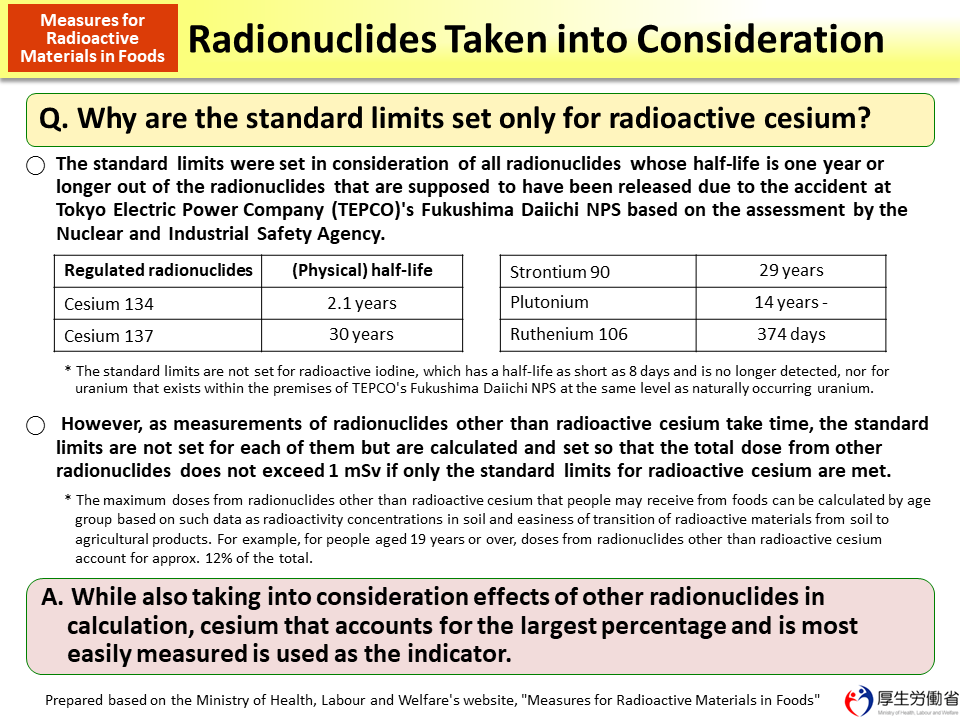Radionuclides Taken into Consideration
This figure shows the grounds why the standard limits are set only for radioactive cesium out of diverse radioactive materials.
All radionuclides whose half-life is one year or longer are taken into consideration, out of the radionuclides that are supposed to have been released due to the accident at TEPCO's Fukushima Daiichi NPS. Radionuclides shown in the table above, such as strontium 90, plutonium, and ruthenium 106, are taken into account in calculation, in addition to radioactive cesium. However, as the standard limits are intended for long-term regulations of radioactive materials in foods, only radionuclides with a relatively long half-life whose long-term influence needs to be taken into account are covered. For example, the standard limits are not set for radioactive iodine. Even if measurements are conducted for these other radionuclides by setting specific standard limits for each of them, it takes time to obtain measurement results. On the other hand, it is easy to measure radioactive cesium. Therefore, the standard limits are calculated and set so that the total dose from other radionuclides does not exceed 1 mSv if only the standard limits for radioactive cesium are met.
Specifically, effects of the radionuclides shown in the table above, such as radioactive cesium, strontium 90 and plutonium, were ascertained through surveys of soil, etc. For example, assuming the entirety of the effects caused by the consumption of foods containing radioactive materials released from TEPCO's Fukushima Daiichi NPS as 100, the effects of radioactive cesium account for around 88 in the case of people aged 19 years or over. On the other hand, the effects of the other radionuclides were found to account for around 12. In this manner, the standard limits were established also taking into consideration the effects of radionuclides other than radioactive cesium.
- Included in this reference material on March 31, 2013
- Updated on March 31, 2019

